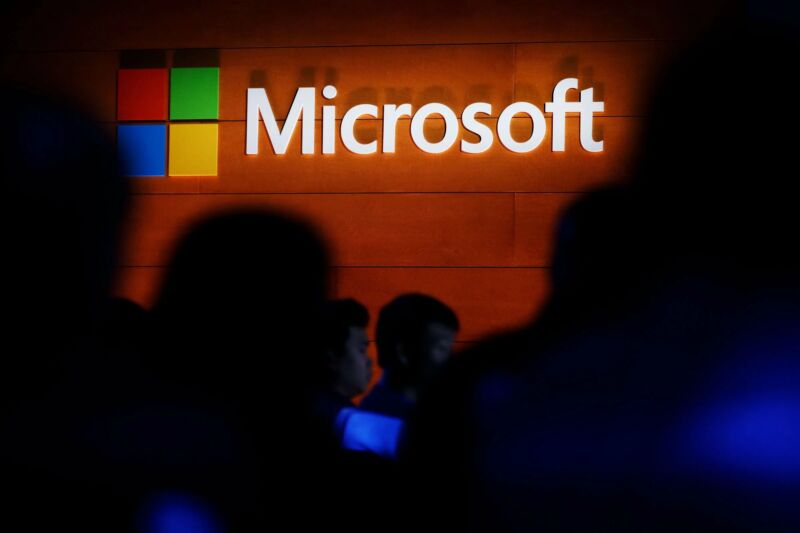GOT TRANSPARENCY? —
Residing proof: It took 5 months and three patches to restore a extreme Azure probability.
Dan Goodin –

Blame is mounting on Microsoft for what critics mumble is an absence of transparency and sufficient high-tail when responding to experiences of vulnerabilities threatening its potentialities, safety professionals talked about.
Microsoft’s newest failing acquired proper right here to light on Tuesday in a put up that confirmed Microsoft taking 5 months and three patches earlier than efficiently fixing a extreme vulnerability in Azure. Orca Safety first advised Microsoft in early January of the flaw, which resided inside the Synapse Analytics facet of the cloud service and likewise affected the Azure Info Manufacturing facility. It gave somebody with an Azure account the flexibleness to entry the assets of quite a few potentialities.
From there, Orca Safety researcher Tzah Pahima talked about, an attacker could presumably per probability per probability:
- Achieve authorization inside quite a few purchaser accounts whereas performing as their Synapse workspace. Shall we’ve religion accessed a methods extra assets inside a purchaser’s account relying on the configuration.
- Leak credentials potentialities saved of their Synapse workspace.
- Speak with quite a few potentialities’ integration runtimes. Lets leverage this to flee a methods flung code (RCE) on any purchaser’s integration runtimes.
- Take assist watch over of the Azure batch pool managing all the shared integration runtimes. Lets flee code every time.
Third time’s the attraction
No matter the urgency of the vulnerability, Microsoft responders have been sluggish to have religion interplay its severity, Pahima talked about. Microsoft botched the important thing two patches, and it wasn’t besides Tuesday that Microsoft issued an replace that totally mounted the flaw. A timeline Pahima offered exhibits applicable how worthy time and work it took his agency to shepherd Microsoft throughout the remediation route of.
- January 4 – The Orca Safety analysis crew disclosed the vulnerability to the Microsoft Safety Response Middle (MSRC), together with keys and certificates we have been able to extract.
- February 19 & March 4 – MSRC requested further small print to assist its investigation. At any time when, we responded the subsequent day.
- Slack March – MSRC deployed the preliminary patch.
- March 30 – Orca turn into able to bypass the patch. Synapse remained susceptible.
- March 31 – Azure awards us $60,000 for our discovery.
- April 4 (90 days after disclosure) – Orca Safety notifies Microsoft that keys and certificates are composed proper. Orca composed had Synapse administration server entry.
- April 7 – Orca met with MSRC to elaborate the implications of the vulnerability and the vital steps to restore it in its entirety.
- April 10 – MSRC patches the bypass, and at closing revokes the Synapse administration server certificates. Orca turn into able to bypass the patch throughout but once more. Synapse remained susceptible.
- April 15 – MSRC deploys the Third patch, fixing the RCE and reported assault vectors.
- May presumably furthermore 9 – Every Orca Safety and MSRC put up blogs outlining the vulnerability, mitigations, and options for potentialities.
- Terminate of May presumably furthermore – Microsoft deploys extra whole tenant isolation together with ephemeral circumstances and scoped tokens for the shared Azure Integration Runtimes.
Nonetheless restore, no notification
The account acquired proper right here 24 hours after safety agency Tenable related a similar memoir of Microsoft failing to transparently restore vulnerabilities that additionally eager Azure Synapse. In a put up headlined Microsoft’s Vulnerability Practices Place Prospects At Risk, Tenable Chairman and CEO Amit Yoran complained of a “lack of transparency in cybersecurity” Microsoft confirmed someday earlier than the 90-day embargo lifted on extreme vulnerabilities his agency had privately reported.
He wrote:
Every of those vulnerabilities have been exploitable by somebody utilizing the Azure Synapse service. After evaluating the situation, Microsoft decided to silently patch certainly certainly one of many issues, downplaying the priority. It turn into best after being advised that we have been going to plug public, that their memoir modified… 89 days after the preliminary vulnerability notification…after they privately acknowledged the severity of the safety situation. So a methods, Microsoft potentialities have religion not been notified.
Tenable has technical small print proper right here.
Critics have religion commonly recognized as out Microsoft for failing to restore a extreme Home windows vulnerability known as Follina besides it had been actively exploited inside the wild for greater than seven weeks. The exploit method turn into first described in a 2020 educational paper. Then in April, researchers from Shadow Chaser Group talked about on Twitter that they’d reported to Microsoft that Follina turn into being exploited in an ongoing malicious junk mail flee and even built-in the exploit file frail inside the selling marketing campaign.
For causes Microsoft has but for example, the agency did not repeat the reported habits as a vulnerability besides two weeks in the past and did not launch a correct patch besides Tuesday.
For its piece, Microsoft is defending its practices and has offered this put up detailing the work eager in fixing the Azure vulnerability found by Orca Safety.
In an announcement, agency officers wrote: “We’re deeply devoted to protecting our potentialities and we deem safety is a crew sport. We take pleasure in our partnerships with the safety group, which allows our work to protect potentialities. The discharge of a safety replace is a steadiness between high quality and timeliness, and we connect in ideas the should prick purchaser disruptions whereas enhancing safety.”

